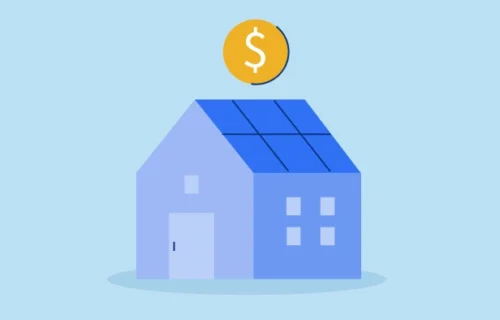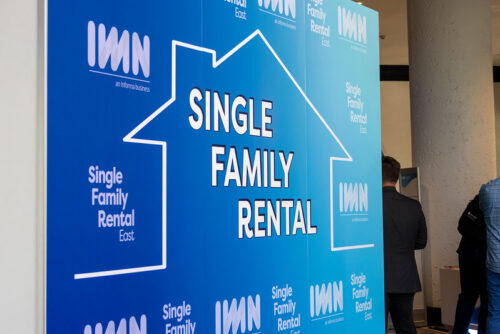
Connect with a Lima One expert today!
If you’d like to know more about this topic or see how it applies to your project, let’s talk.
Applying for an Investment Property Loan
6 Things to Do Before Applying for an Investment Property Loan
When you buy a home to live in, the mortgage lender will want to know specific pieces of information such as your credit score, your debt-to-income ratio, and your planned down payment. The reason the lender asks for this information is to demonstrate that you have the financial means to pay back the home loan. If the numbers look good, they may be willing to work with you if, for example, your down payment is smaller than average.
Applying for an investment property loan, however, is a whole different ballgame than a conventional loan. These loans are typically considered a higher risk for the lender, because it’s easier to walk away from an investment property than from your primary residence. And usually, these loans aren’t federally guaranteed like Freddie Mac, Fannie Mae, and FHA loans are.
As a result, investment property money lenders follow a different qualification process with more stringent minimum requirements. They will want to dig deeper into real estate investors’ financial documentation, and you will need to demonstrate a solid understanding of what the property is worth and how you plan to add value. In addition, since PMI (primary mortgage insurance) is not available for investment property loans, you should plan on making a 20% down payment in many cases.
If you are new to investment properties, the process can seem intimidating. The good news, however, is that getting your ducks in a row ahead of time can resolve many of the potential hang-ups before they become an issue. Here are 6 things to do before you apply for an investment property loan:
1. Make a project plan.
No two investment properties are alike, which means your investment strategy and goals may vary from property to property. Before you talk to a lender, ask yourself questions like these:
- What is your plan for the property? Will you sell it as a flip or rent it?
- How long will it take to make a profit?
- What role does this property play in your larger investment strategy and real estate portfolio?
- What will the property cost?
- How much is it worth now, and how much could it be worth with renovations?
- What kind of loan term will you need—a short-term bridge loan or 30-year mortgage?
- What percentage down and closing costs do you need to provide?
- Do you have people in your network who can connect you with a lender?
2. Nail down your construction budget.
Consider both hard and soft costs as you determine how much to budget for construction and renovations. Hard costs include materials, labor, and any other physical costs directly related to the property development. Soft costs are the less visible costs such as building permits, fees, certifications, and inspections. If you are working on a fix and flip project financed by Lima One Capital, you can finance up to 90% of your purchase and rehab costs, so it’s important to have a detailed budget worked out before you apply for the loan. Be sure to get quotes from contractors so that you have hard numbers to work with and you’re not just guessing.
3. Fit the property to the neighborhood.
We all remember the Extreme Home Makeover fiascos where the home renovations completed on the show were completely out of scale with the neighborhood. Owners often had to pay astronomical taxes, and the homes were nearly impossible to sell. While you may not be planning a renovation on that scale, it’s still important to keep your plans consistent with other similar homes in the area. Over-the-top renovations make it difficult to sell the home because people shopping in that neighborhood may not be willing to pay a higher price tag, and buyers looking for pricier houses will look in other areas. On the flip side, if you are renovating a home in a more expensive neighborhood, it may be wise to go for the granite countertops and top-of-the-line flooring after all, since that is what buyers will expect.
4. Review the rent roll.
A rent roll shows you a snapshot of rental income, which will affect the anticipated value of the property. The rent roll should document increases and decreases in rent over time, tenant turnover, revenue over time, late fees, and evictions. All of this data will contribute to the bigger picture of expected income streams and revenue growth. When you apply for the loan, you can use this as supplemental income to get the best loan terms possible.
5. Get financials in order.
Your lender will need to confirm your debt-to-income ratio, credit score, and down payment to qualify you for the loan. Lenders may vary on which specific documents they require, but you will need to demonstrate that you have the financial ability to qualify for the loan, provide a down payment, and make monthly mortgage payments as you build home equity. Before you approach the lender, have the following information readily available:
- Bank statements
- Income statements
- Tax statements
- Investment accounts
- Property appraisal
The big difference is that investment property lenders underwrite the property, not the borrower. So while the borrower needs to meet basic criteria—minimum credit score and history of paying back loans and credit cards—the main decision on the loan amount and whether you get a higher interest rate comes down to how the numbers work on the investment and your experience as an investor.
6. Have a good idea of comparable properties or appraisal.
Comparable properties, or comps, are similar properties that give you a close approximation of the value of the property you are considering. Comps are usually in the same neighborhood, have a similar square footage and condition, the same number of bedrooms and bathrooms, and may have similar amenities. You will also want to look at the listing price, occupancy rate, and rental income of the properties you are comparing.
Appraisers use comps to gauge the value of a property. The goal at this stage is to get a good idea of what the fair market value will be after renovation so that you can negotiate more effectively with the seller. This information will affect the loan amount you can qualify for. Most investment property lenders will currently finance a loan to value ratio (LTV) of up to 75% for rental properties. If you plan to do renovations on the home, the loan amount may be based on the loan to after repair value (LTARV) rather than the current value of the property. Either way, having a good grasp on comps and appraisal values will put you in a better bargaining position when you’re ready to choose a property and negotiate with the seller.
Conclusion
Applying for an investment property loan requires a lot of detailed preparation. However, it’s also important to step back and look at the bigger picture.
- Do you know your lending limits so you don’t get in over your head?
- Do you have enough available capital to see the project through?
- Have you done your due diligence on the condition of the property and determined whether you can make a profit once construction costs have been paid?
Asking questions like these will protect you from making a bad investment and set you up for a positive, profitable experience with your real estate investments.
Subscribe for More Insights
Get the latest industry news & Lima One updates.









